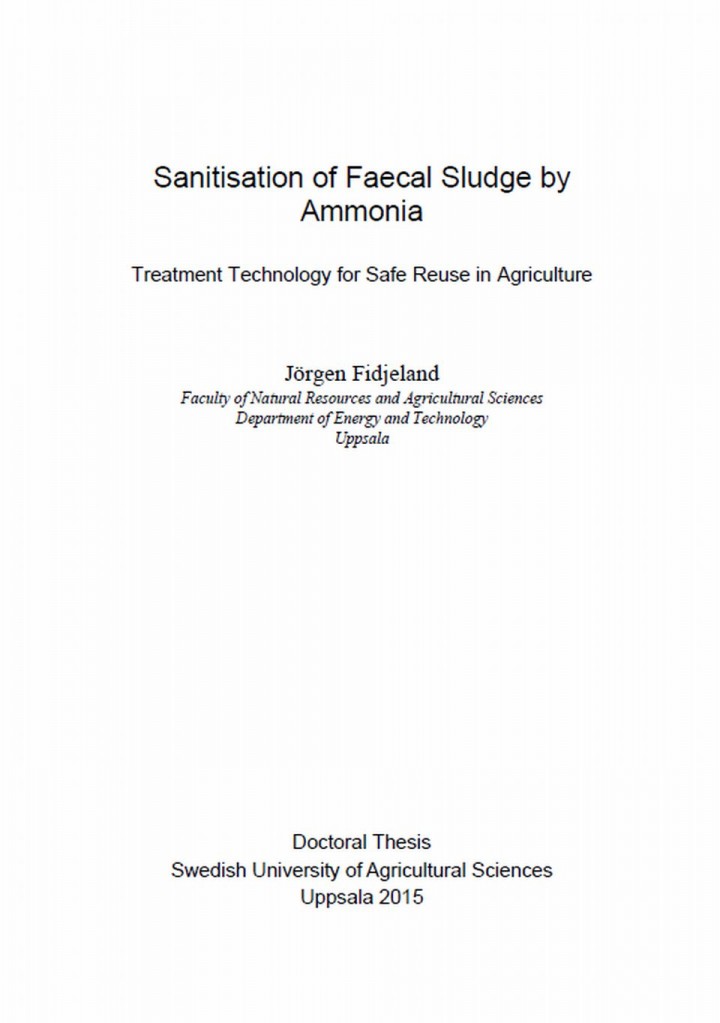Sanitisation of faecal sludge by ammonia Treatment technology for safe reuse in agriculture Fidjeland, J. (2015)
Faecal sludge contains valuable plant nutrients and can be used as a fertiliser in agriculture, instead of being emitted as a pollutant. As this involves a risk of pathogen transmission, it is crucial to inactivate the pathogens in faecal sludge. One treatment alternative is ammonia sanitisation, as uncharged ammonia (NH₃) inactivates pathogens. The aim of this thesis was to study how the pathogen inactivation depends on treatment factors, mainly NH₃ concentration, temperature and storage time, and based on this to make treatment recommendations that ensure pathogen inactivation. Salmonella inactivation was rapid and could be eliminated within a few days. Reovirus and adenovirus were inactivated more slowly than that, but more rapidly than bacteriophages PhiX174, 28B and MS2. Ascaris eggs were generally inactivated more slowly than the other studied organisms, especially at low temperatures (addition of ammonia. The addition can be urea, which is a common mineral fertiliser that hydrolyses to ammonia and carbonate through the enzyme urease found in faeces. Ammonia sanitisation of faecal sludge is a simple and robust technology enabling a high degree of pathogen inactivation. This can considerably reduce the health risk for farmers, food consumers and downstream populations. It is important to minimise flush water volumes in order to reduce the treatment costs.
Bibliographic information
Fidjeland, J. (2015). Sanitisation of faecal sludge by ammonia Treatment technology for safe reuse in agriculture PhD thesis, Department of Energy and Technology, Swedish University of Agricultural Sciences, Uppsala, Sweden
Filter / Tags
Faecal sludge treatment processesFaeces or faecal sludgeGreywater or wastewaterUrineCase studies in other formatsEnglish

